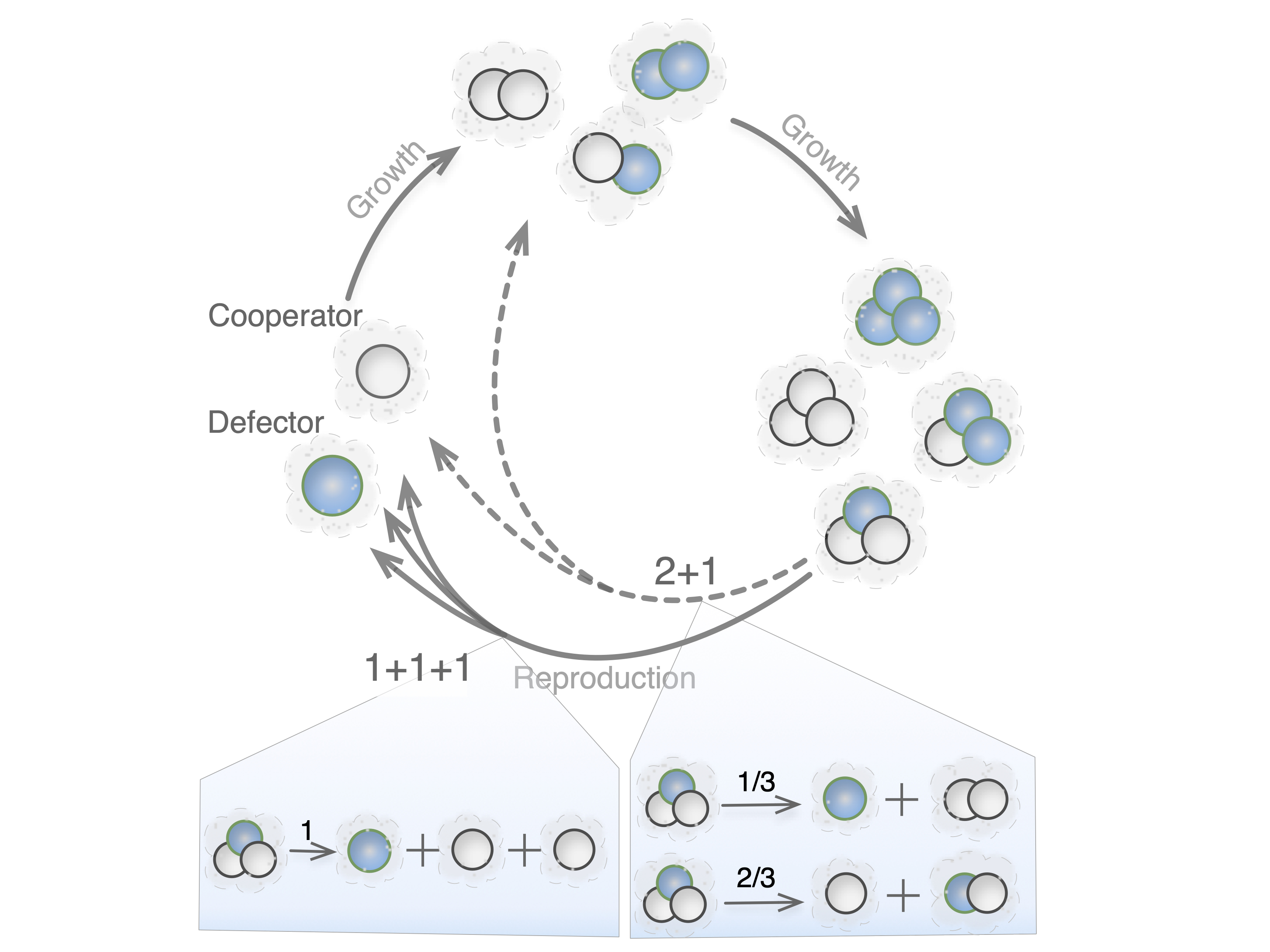Evolution of life cycles of heterogeneous groups
From a bunch of identical cells to a collective with diverse members
Research here is performed in collaboration with Dr. Yuanxiao Gao, whom I had the honor
to co-supervise during her Ph.D. studies.
Whenever a species accepts a multicellular life cycle, its evolution becomes influenced by the interactions of cells within a multicellular body. For example, if cells are capable to exhibit division of labor, being a member of a large colony brings an advantage over solitary existence in which no benefits from other cells can be gained. Then, life cycles with larger organism sizes and propagules gain an evolutionary advantage. However, if selfish cells emerge as a result of the mutations, they will free-ride on the cooperation of other cells. In such a case, forming large cell colonies brings a risk of invasion of these free-riders, so the optimal life cycle may feature small colonies.
Here, we developed the theoretical framework that allows us investigating the evolution of life cycles, when a colony develops multiple cell types in the course of its growth.

Papers:
Core model. What is the optimal reproduction mode if colony growth is determined by cell interactions: Interacting cells driving the evolution of multicellular life cycles. Gao, Y., Traulsen, A., and Pichugin, Y. PLoS Computational Biology, 2019. (link)
How develpmental strategy is shaped by cells interactions: Evolution of irreversible somatic differentiation. Gao, Y., Park, H.J., Traulsen, A., and Pichugin, Y. eLife, 2021 (link)
What is the optimal fragmentation mode under the interplay between cells interactions and raw size benefits: Evolution of reproductive strategies in incipient multicellularity. Gao, Y., Pichugin, Y., Gokhale, C. S., and Traulsen, A. Journal of the Royal Society Interface, 2022 (link)